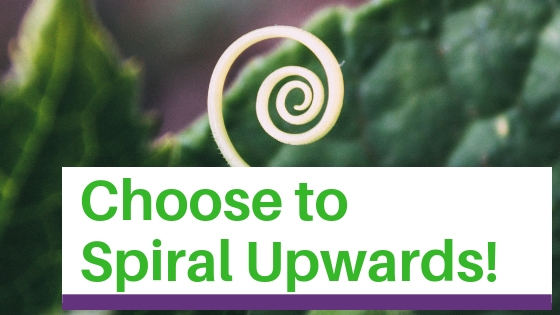You might remember that in a recent article, we defined resilience, determined why it is important in the modern Australian workplace, and took a look at a few ways resilience can be sewn into the corporate fabric.
Today, let’s build on that, and examine how resilience can not only be maintained, but strengthened over time.
Resilience: A refresher
First of all, a quick refresher. What does resilience mean? If you think it means preventing difficult situations, diminishing stress, or shying away from confrontations, think again.
What resilience really means is having the ability to manage any challenges that might come your way. It means being able to do so with a sense of calm and tact, while being true to your own values.
What is the Downward Spiral?
Before we can learn how to initiate the upward spiral of resilience, we need to know what is the downward spiral. How do we spot it? How can it affect our performance?
What many of us know as the downward spiral is a combination of stress, anxiety, and possibly even depression. These can conspire to turn life into a daily struggle to simply maintain some semblance of normalcy.
As for how this might affect your output at work, picture this: You’re locked in the downward spiral, and giving a presentation at work. Rather than focusing on the positive, optimistic points of the topic at hand, the spiral locks you in on the negative, pessimistic aspects. Then, any constructive feedback you receive feels much more negative, perhaps even personal. It may affect the rest of your day, even the rest of your week. And you may not want to give another presentation any time soon.
It’s a spiral in the same way that a whirlpool is a spiral: It hooks you and drags you down.
Initiating the Upward Spiral
Getting caught in a downward spiral is avoidable. The most critical thing to do is to build your own resilience so that getting stuck is less likely. In return, it will improve our own performances at work, and will indirectly improve that of our coworkers.
Yes, you read that right. Improving yourself can inspire others to improve themselves, too. As a study published in the British medical journal BMJ concluded, happiness (and by extension resilience) can actually spread among people like a contagion. And according to another study published by the Department of Economics at the University of Warwick, happiness among workers can lead to a 12 percent bump in productivity.
How you can build your own resilience
Getting into an Upward Spiral means building your own resilience first. Here are a few ways in which you can nurture, grow, and expand your own resilience.
The Greatness of Gratitude
Gratitude isn’t just a useful tool for building resilience. It affects the brain on a biological level. Just like an antidepressant, gratitude boosts the brain’s production of dopamine, a neurotransmitter with several distinct pathways in the brain. One of those pathways is responsible for the motivational component of reward-based behaviour.
And if you express gratitude toward someone for something they have done, positive emotions are experienced both by the giver and the receiver. In short, with gratitude everybody wins. With The ORANGES Toolkit (more on that below) you learn exactly how to leverage this amazing process.
When we take time to remember all the things we are grateful for, the dopamine tap gets turned on, and thus we feel more motivated to get things done. Even when times are tough, recalling those things we are fortunate to have can help us to bounce back better and stronger.
Gratitude, you might say, is the secret ingredient of the upward spiral.
If you’re looking for a few great gratitude exercises, Matthew Jones over at Inc.com has you covered.
Move
No, this doesn’t mean move house or change jobs. It just means… move. Go for a run. Head to a yoga class. Hop on your bike and take a spin around the neighbourhood. Stroll through the park. Scale your nearest rock climbing wall. Chase your dog around your yard. Anything.
While remembering what you’re grateful for can provide you with a dopamine kick, Dr. Schwarz tells us that exercise can elevate our resilience-related emotions as well by increasing the production of endorphins, serotonin, and norepinephrine (say those five times fast), all of which make us feel just plain good.
The problem with exercising is that many people give up before they achieve their goals. It’s over 70 percent, in fact! So, start small.
For a few tips on how to make exercise a regular part of your routine, check out this article from American entrepreneur, author, and photographer James Clear, it’s all about starting small. Make it easier to get started each day. Don’t worry about the results until later.
Take Time to Detach
There may have been a time when a job was just a job. However, in these modern times, it seems that the majority of people get a sense of identity from their work. And if you are what you do, it stands to reason that if you’re not working, then… what are you?
It’s a dangerous trap to fall into—feeling that life without work means that we are not fulfilling our true purpose. It’s worth noting that in order to build resilience, we need to take time to detach from work on a regular basis.
Taking this time away from work gives you the time to recover and pursue your outside interests. Think about those creative endeavours that leave you feeling fulfilled, spending time with friends and family, and even partaking in charitable activities that benefit our local communities.
Detaching from work isn’t letting people down. It’s putting your wellbeing first so that you can be your best self, and help others even more effectively. Always put on your oxygen mask before helping others!
Do The ORANGES Toolkit and learn many more ways of growing your resilience
One of the most effective and proven ways of building, maintaining, and growing resilience in the workplace is The ORANGES Toolkit. Developed by Camp Quality, it’s a complete program for improving mental well-being at all levels of business, and for instituting cultural changes that stick.
Colin Henson, a member of the leadership team at ADSSI HomeLiving Australia, on the NSW Central Coast, said in this recent testimonial, that The ORANGES Toolkit was a key part of enabling his team to be at their best. As he said, ‘You need a lot of energy and strength and resilience to turn up at a client’s home day after day after day, and be the person that client needs you to be.”
After instituting the ORANGES program, Henson stated that he noted a remarkable uptick in optimism and resilience. ‘Now,‘ he says proudly, ‘99% of our staff believe in the mission and the values. Now that is extraordinary!‘
Talk to Training x Design about equipping your team members with The ORANGES Toolkit.
The R in ORANGES stands for Resilience, which is what you get when you bounce back with greater ease! It’s the second of seven workshops delivered over a two-day program. The program empowers your team members to learn and use 40 mindset-improvement strategies, which have an incredible impact on workplace cultures. The program is so impactful that participants can put the strategies in place immediately.




Leave A Comment